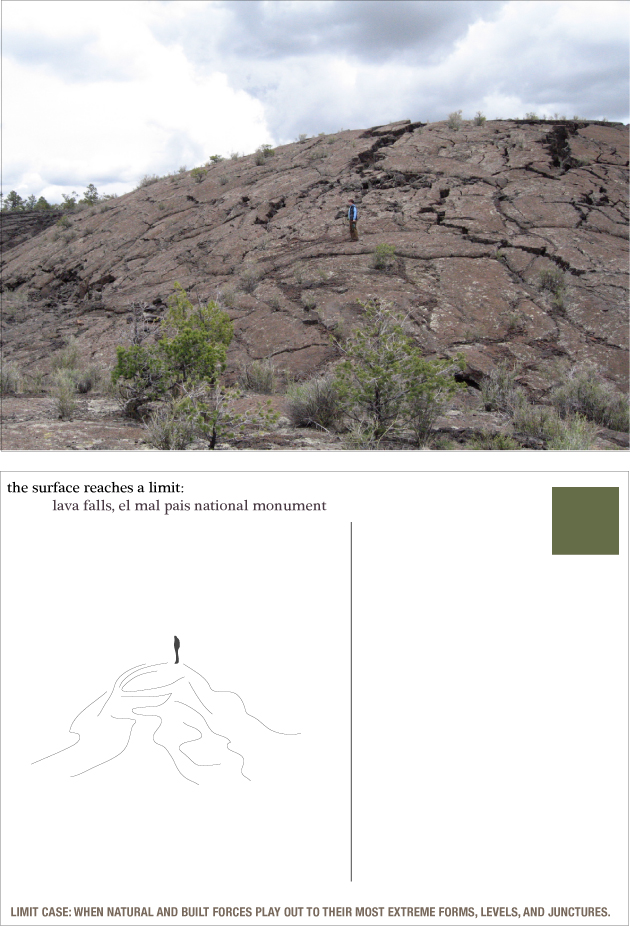Thanks to Bill for a great provocation for this week ... I'd like to respond to his invitation to:
"hear a bit about how any of us have borrowed constructs and terms from science for the purpose of art & environment projects, and how we’ve bent them to our purposes. In short, instead of arguing about whether we’re using a scientific concept correctly or not, I’d like to propose that it may not matter--that, in fact, it’s the entire point to not use the word or concept in the same fashion as a scientist. That’s a mechanism typical of a living language, hence a culture."
In 2007, smudge studio (Jamie Kruse and I) appropriated the term "limit case" from calculus and used it for the purpose of an art + environment project called the "Limit Case Postcards." In calculus, as far as I can make it out, "limit case" refers to the point at which "we have gone as far as we can go within the terms of a particular theorem." It addresses the question: What is happening to a function as it approaches a certain point?
I really don't understand calculus at all. But while on a research and art-making trip, we were drawn to the phrase "limit case' because it somehow captured the force and energy of the landscapes, land uses, and extreme social environments that we were passing through. We decided that we would respond to our experiences by making what we called "limit case postcards." Here is our artist statement:
We traveled through the American southwest for 28 days.The trip consisted of 3700 miles (a figure 8 of sorts). We selected sites that would offer us experiences of intensity: intensity of landscape, color, climate, remoteness, shape, history, and site-responsive built environments. We found ourselves arriving at sites where humans, the landscape and the built environment converged to create exquisitely concentrated zones of contact. State borderlines converged with deep economic divisions; remote desert "wasteland" converged with garish tourist attractions; a quonset hut used to develop the atomic bomb converged with present day efforts to redesign it for sustainable living practices in the desert.
The experiences compounded and we began to regard such moments as "limit cases": intense points where natural and built forces mutually contaminate as they play out to their most extreme forms, levels, and junctures. The postcards visualize sites reaching their "limits" and passing into something else.
Bill's provocation resonated for me because as you can see in the artist statement, we took great liberty with the idea of a "limit case" when we used it to help us visualize what it felt like to us to encounter natural and built forces as they reached their most extreme forms, levels and junctures and passed into something else.
I'm not sure if our sense of "limit case" is at all close to what mathemeticians call limit cases ... but our appropriation of these words and as much of the concept as we could grasp helped us immensely in finding some language to express what was otherwise difficult to describe in words. Here's one of the post cards that resulted:


No comments:
Post a Comment